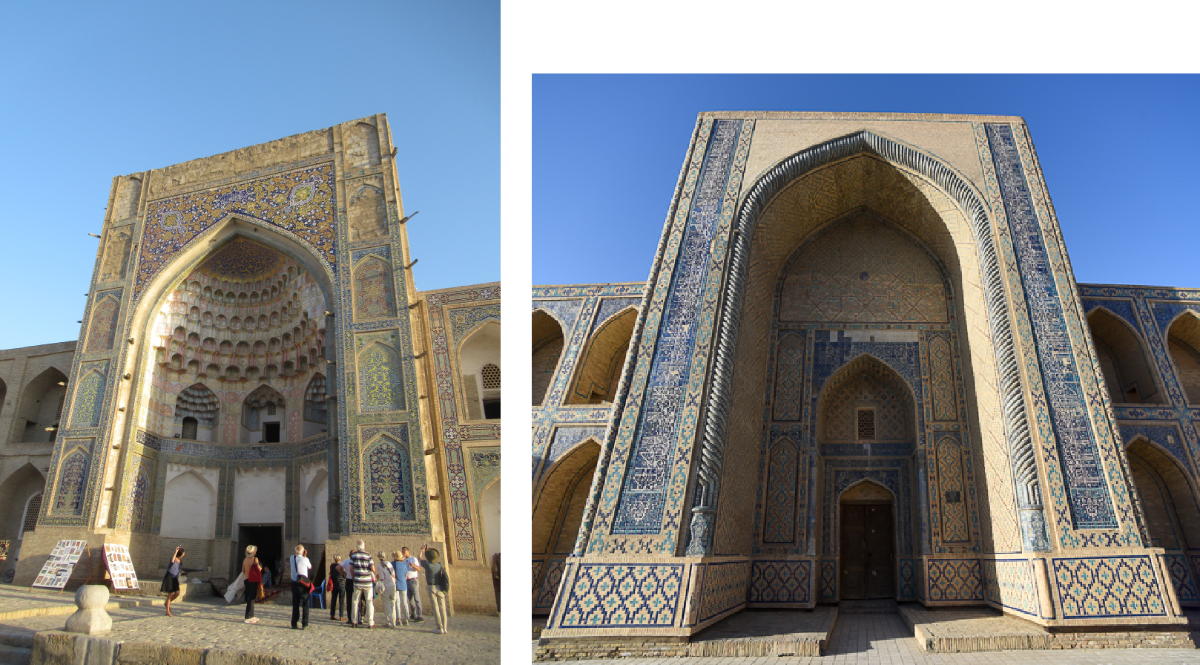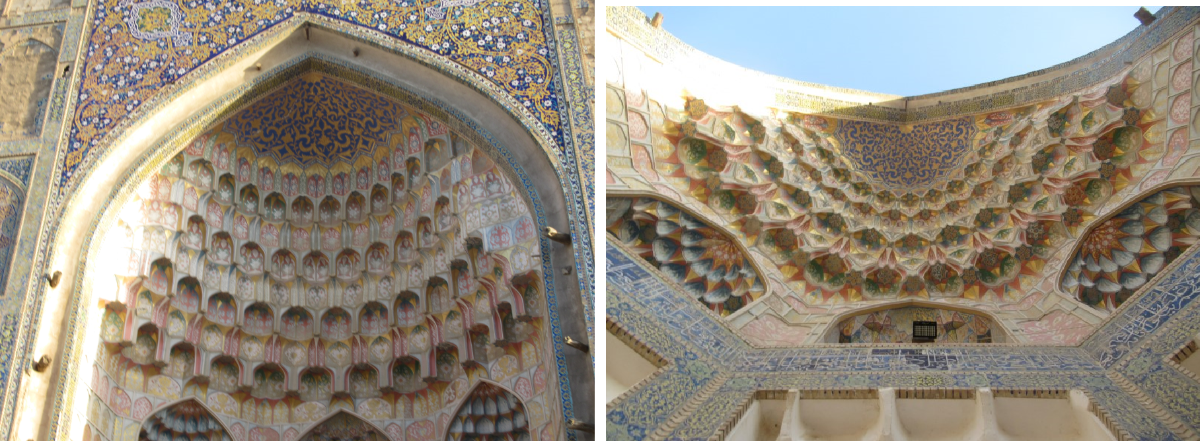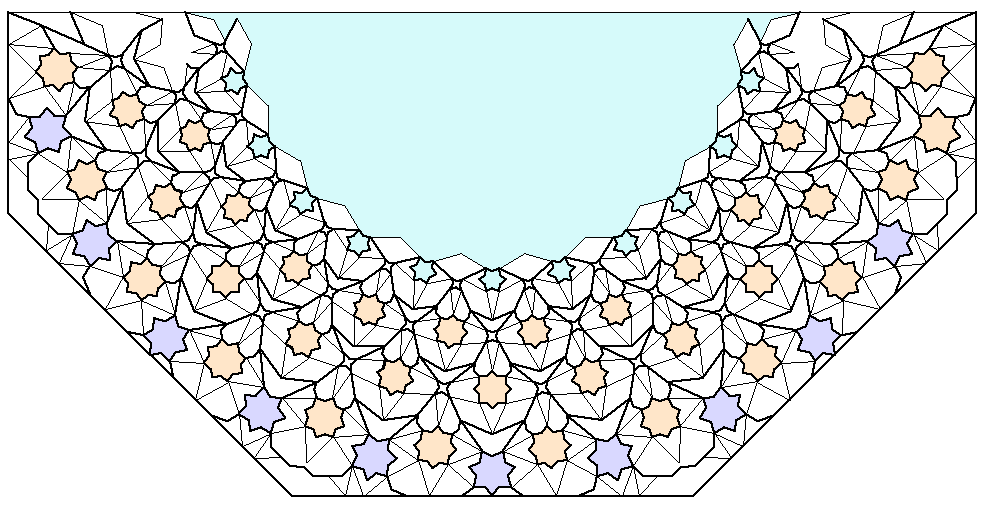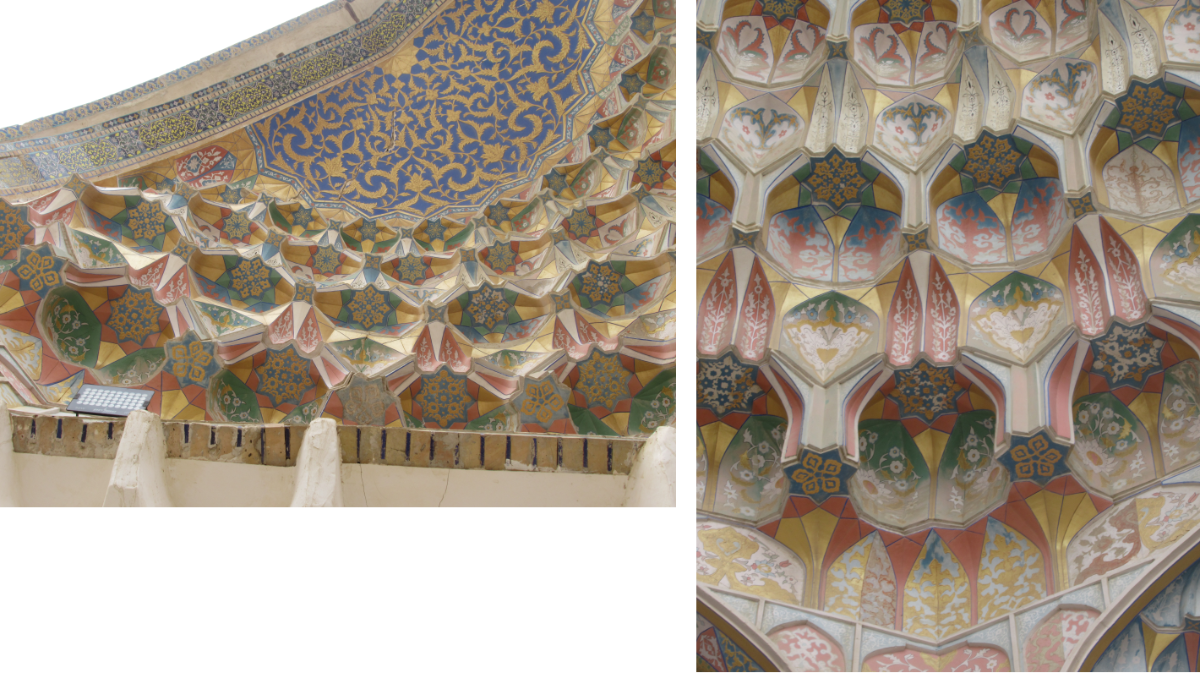Abdul Aziz madrassa - mu
The Abdul Aziz madrassa (1652) forms an architectural whole with the opposite Ulug-Beg madrassa. This is called kosh madrassas.
The iwans of both madrassas clearly illustrate the evolution in Centraal-Asian architecture.
The decoration of the Ulug Beg madrassa is sober, while the iwan of the Abdul Aziz madrassa is abundantly decorated. The stalachtite muqarnas is colourful and spectacular. The niche above the entrance of the Ulug Beg madrassa is flat and only decorated with quran citations in kufic script i a simple geometrical pattern.

muqarnas

The muqarna is constructed as consecutive concentric layers with a half 24-pointed star in the apex. Each layer consists out of cells with a star, surrounded by stalachtites. In the floorplan you can see that the layers are connected by connecting the vertices of the stars
On the drawing you can see different types of stars:
- 7-pointed (blue)
- 8-pointed (pink)
- 6-pointed (turquoise)
- little 4-pointed (white)

On the pictures below you can see how the muqarnas are finely painted.
Notice the stars above in the cells as well as the little 4-pointed stars at the bottem of the stalachtites between the stars on the horizontal layers.
